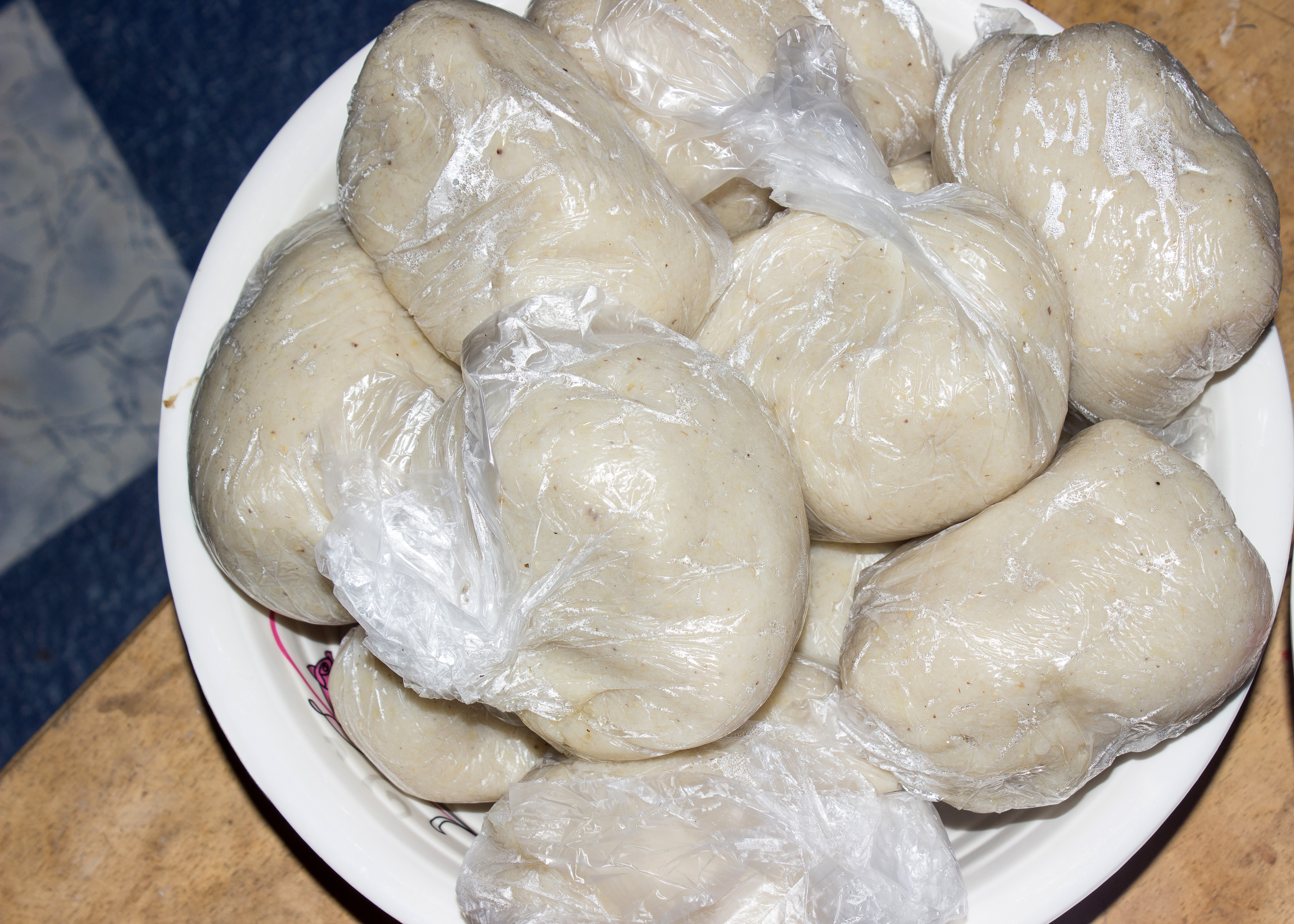One thing that most cultures have is a staple food — something that is eaten with every meal. In many Asian countries, including Thailand, it’s rice. In Ghana, there are a couple of different versions of the staple, but they are all essentially a pounded starch mixed with a bit of water to make a kind of dough that is then dipped or dunked in soups and sauces or pinched with fish and meat.
Banku

Banku, pronounced bahn-koo, which is white and has a bit of a sour taste to it. It’s made from fermented corn flour and cassava flour. The fermentation of the corn is what gives it the slightly sour, tangy flavor.
To make banku, add water to the flours and stir over a fire or on the stove. Keep stirring as it thickens to avoid lumps. Once it has a consistency of play dough, it’s finished. It’s served hot and to eat it, you pinch off a bit with your fingers, dip in in your soup, stew or sauce and pop it in your mouth.
Kenkey
Kenkey, pronounced ken-kay, is wrapped in banana leaves or corn husks. It’s also made from fermented corn flour.
The sour flavor of kenkey is less pronounced that the flavor of banku. There are two main versions of kenkey in Ghana: Ga and Fante. The flavors are just slightly different, due to different durations of the fermentation, but they are essentially the same dish.
To make kenkey, if you don’t have ready-to-use fermented cornmeal, first ferment the cornmeal by adding just enough warm water to dampen it. Cover and place the bowl in a warm place for two to three days to ferment. Wrap in warmed banana leaves.
Fufu

Fufu, pronounced foo-foo, is much milder than either banku or kenkey since it does not use fermented components.
It’s made from pounded cassava and plantains. It traditionally takes two people to make fufu. The cassava and plantains are put in a large mortar and pounded with a large pestle by one person and the other person turns the mixture with a paddle in between pestle strikes. Water is added until the mixture becomes sticky and dough-like.
In Ghana, fufu is traditionally served with soups, often times just plopped in the bowl. To eat fufu, use your fingers to pinch of a small ball, and use your thumb to make a depression on top to scoop some soup in before popping it in your mouth. Fufu is swallowed without chewing.

Konkonte
Konkonte, pronounced kon-kawn-tay, is like the sister of fufu, though it’s made only with pounded dried cassava.
This is one of the most widely eaten staples because it’s often made from the lower quality cassavas, thus making it cheaper than the other options. It’s also known as “Face the Wall” because it’s ingredients are so cheap, it’s become associated with being too poor to afford other options.
To make konkonte, you mix powdered dried cassava with water over a fire or stove, stirring as it thickens and is sticky. Konkonte is also eaten with soups and not chewed, like fufu.

